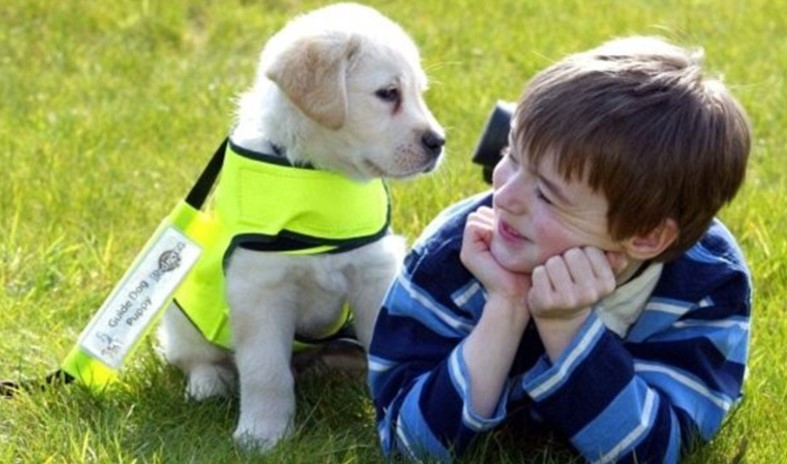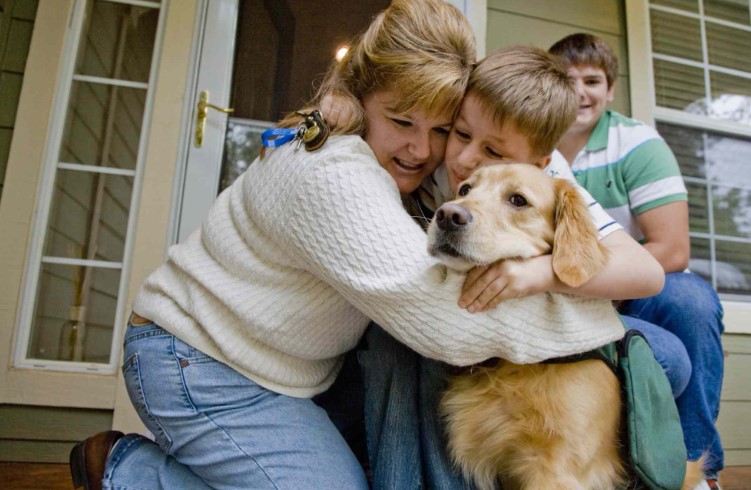Often congenital to some extent, the condition may present itself in dogs. A key characteristic of autism in animals is repetitive motions, which are also common in dogs. These animals also tend to be very picky eaters. If you notice any of these characteristics, it is time to seek a diagnosis from a veterinarian. Read on for some tips for determining whether your dog may be suffering from autism. If you think your dog has autism, the following signs should raise a red flag.
Autism in dogs is a disorder that affects the animal’s ability to make sense of its world. Our pets are constantly bombarded with information from their senses, and if they’re unable to put it all together, they can feel quite distressed by the confusion. Experts think many autistic dogs have an unusually strong response to sights and sounds, especially sudden movements. Other autistic behaviors include repetitive actions like licking or chewing, focusing on a single item or task (like chasing its tail), or pacing. These behaviors can be so troubling that many owners seek treatment for their dog’s autism before considering other causes for the distress. You should consult your veterinarian to see if he or she thinks your dog may be autistic, as diagnosing this condition requires special training and experience.

Autism is congenital in dogs
While the disorder is typically inherited, some genetic components of autism are passed on from their parents. These components may affect how mirror neurons develop, which appear to be associated with autism behaviors. While the cause of autism is not known, treatments can alleviate symptoms and minimize the condition’s negative impact on your dog. Here are three possible causes of autism in dogs:
Some dogs with autism do not show any obvious symptoms. These dogs may be very sensitive and unable to interact with humans. They may not make eye contact or make much effort to communicate. They may also exhibit trance-like behavior and be unsociable. During playtime, they may not interact at all, avoiding eye contact and ignoring other dogs. A few dogs may exhibit signs of OCD, such as tail-chasing, circling, chewing, and lining up toys. These behaviors may indicate an underlying cause, such as elevated levels of serum neurotensin, which is produced by corticotropin-releasing hormone and stress.
Repetitive motions are a key characteristic of autism
The first step in diagnosing autism in dogs is to find out whether your dog possesses this disorder. Dogs are incredibly social animals, and they like to interact with other creatures and humans. If your dog doesn’t seem to interact with other creatures, or doesn’t pay attention to you during normal feeding times, he may have autism. Your dog may also have a “flat” personality – he may stare at one direction for a long time or refuse to make eye contact.
Some conventional veterinarians and animal behaviorists have identified a number of behaviors that may indicate this disorder, including tail-chasing. However, the findings are not conclusive enough to make a diagnosis. Repetitive motions are a key characteristic of autism in dogs, and conventional veterinarians are beginning to recognize it. A study published in the journal of the American College of Veterinary Behaviorists in 2011 revealed that dogs with tail-chasing behavior were also more prone to seizures and explosive aggression. In addition, they would often walk in slow motion, and would sometimes chase their tails.

Animals with autism tend to be picky eaters
One of the most common behavioral manifestations of eating peculiarities in children with autism is food neophobia. This is aversion to novel situations and stimuli. In autism, picky eating is a symptom of this condition, and is an appropriate response. The definition of what constitutes a novel stimulus depends on the individual’s subjectivity, sensorimotor functioning, and acquired experience.
Many children with autism are hypersensitive to certain textures. While many delicious foods are palatable, picky eaters are more likely to avoid squishy food, especially if it is squishy. If this is the case, try changing the texture. For instance, if your child doesn’t like the texture of a certain food, change the texture slightly. This can encourage your child to try something new.
If you’re an animal lover, you’re probably aware of just how intelligent and human-like many dogs are. Many of us who have pets have witnessed instances where their intelligence seemingly places them well above that of your average four-legged pet. Now there’s some scientific evidence to back up those observations: Dogs may be autistic too. The good news is that while dogs don’t necessarily benefit from special treatment like humans might, they can still receive some help in the forms of medication and behavioral therapy. By understanding these symptoms and seeking assistance early on, we can help ensure that our dog friends enjoy a happy, fulfilling life as much as possible.


